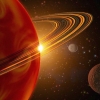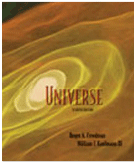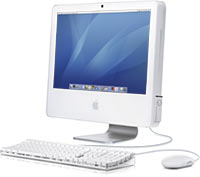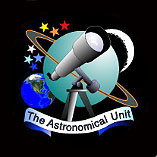
|
 Image: Artist's impression of the planets orbiting the star 79 Ceti, 117 light-years from Earth (To learn more, click here)  For a printable version of this page,
click here
For a printable version of this page,
click here
|

|
 Image: Artist's impression of the planets orbiting the star 79 Ceti, 117 light-years from Earth (To learn more, click here)  For a printable version of this page,
click here
For a printable version of this page,
click here
|
  |
1. Your textbook. The required textbook for this course is R. A. Freedman and W. J. Kaufmann, UNIVERSE, 7th edition, (W. H. Freeman, 2005). All of of your reading assignments will be from this book, and you will be assigned homework questions based on these readings. You are strongly encouraged to purchase and use the online eBook version of the book. Access to the eBook retails for $45.00, less than half of the cost of a new copy of the printed book ($102.25 at Amazon.com) and even less than the cost of a used printed book. You can get the eBook even more cheaply through the UCSB Bookstore by purchasing a package that includes an PRS transmitter (described below). (The Bookstore does not have printed copies of the book for sale.) For details, scroll down to How to save money. In addition to having all the content of the printed version, the eBook also includes animations, web links, and interactive quizzes you can use to test your understanding. During the quarter, your instructor will add annotations to individual pages of the eBook with hints and guidance to help you get the most out of the reading. You can also add your own notes and highlighting, just like with a printed book. You can read the eBook on any computer with web access. No more lugging a heavy textbook around! For information on how to use the eBook, visit the syllabus page. If you are using a printed copy of the book rather than the eBook, you will need to use the textbook companion web site (http://bcs.whfreeman.com/universe7e/). This includes study aids such as interactive quizzes, videos, animations, and links to the latest astronomy news on the World Wide Web. (These same features are integrated into the eBook.) IMPORTANT: Whether you're using the eBook or a printed copy of the book, you must register on the textbook companion web site to be able to use your PRS transmitter in lecture (see below). For instructions on how to register, click here. (If you are using the printed version of the book, registering will allow you to use all of the features of the companion web site. If you are using the eBook, you won't need to visit the companion web site again, since all of its features are integrated into the eBook.) |
 |
2. An Interwrite PRS transmitter. You'll bring your PRS (Personal Response System) transmitter with you to every lecture. At least twice during each lecture, your instructor will ask a multiple-choice question based on the topic under discussion. You'll punch in your answer using your PRS transmitter, and receivers located in the lecture hall will record your response. Your instructor will be able to see everyone's individual response on a computer monitor, and will use your responses to start a discussion and to help you better understand the material. Whether you give the correct answer or not, you'll get points for your participation in lecture using your PRS transmitter. Your in-lecture participation using your PRS transmitter is worth 4% of the total points toward your course grade. You can purchase a PRS transmitter from the UCSB Bookstore. The least expensive way to do this is to purchase a package that includes a PRS transmitter and an eBook access code. For details, scroll down to How to save money. IMPORTANT: In order to receive credit for your participation in lecture, you must register on the textbook companion web site (which is different than the eBook web site), then register your PRS transmitter. You must do this before lecture on Wednesday, January 11, 2006. To learn how to register your PRS transmitter, click here. |
 |
3. Access to WebAssign. You will use a system called WebAssign to submit your answers to "pre-lecture quizzes." You will have three such quizzes a week. Your participation in the online quizzes is worth 4% of the total points toward your course grade. To learn more about the online quizzes and how to purchase access to WebAssign, visit the On-line Assignments page. Note that you must purchase WebAssign access before the first on-line assignment is due (at 10 p.m. on Tuesday, January 17, 2006). The WebAssign system will be available to you beginning at 10 p.m. on Tuesday, January 3, 2006. |
 |
How to save money You have two options for purchasing the textbook and PRS transmitter.
You can also save a few cents by making an online purchase of WebAssign access ($6.90) instead of purchasing an access code at the Bookstore ($7.05). For details, see the On-line Assignments page. |
 |
In this course you will be required to use a computer and the World
Wide Web on a regular basis. If you do not have your own computer with Web
access, you may use the computers at Instructional Computing (IC) in Phelps Hall
(http://www.ic.ucsb.edu/)
or the computers Students in Astronomy 1 have priority access to the IC computers. To identify you to the IC staff as an Astronomy 1 student, you will need a priority hour sticker. You may pick these up at the Instructional Computing office at 1523 Phelps Hall. Be sure to bring a copy of your class schedule from GOLD to prove that you are enrolled in Astronomy 1. Instructional Computing offers free workshops on how to use e-mail and the World Wide Web. For more information and a detailed schedule of these workshops, click here or call Instructional Computing at 893-3002. You may also use the computers in the Physics Study Room, Room 1019, Broida Hall, during the hours it is open (Monday through Friday, 8:00 a.m. to 4:30 p.m.). |
 but cell phones are NOT allowed.
but cell phones are NOT allowed. 
|
Extra credit method #1:
Attend a planetarium show at the
Santa Barbara Museum of Natural History,
located at
2559 Puesta Del Sol Road in Santa Barbara. Planetarium programs are offered Saturdays and Sundays in the Museum's Gladwin Planetarium. Each program lasts approximately 35 minutes. You can confirm the times of planetarium shows by calling 682-4711 or by visiting http://www.sbnature.org/education/planetarium/. When you arrive at the Museum, check in at the entrance for a special reduced admission charge. You'll need to keep your receipt to serve as proof of your participation in a planetarium show. For driving directions to the Santa Barbara Museum of Natural History, click here. For a map, click here. You can also get to the Santa Barbara Museum of Natural History via bus using the Santa Barbara Metropolitan Transit District (MTD). The MTD is free for UCSB students. Take Route 11 or Route 24 to the Transit Center in downtown Santa Barbara. Then take Route 22 to the Museum. |

|
Extra credit method #2:
Attend a "star party" offered by
The Astronomical Unit,
an organization of avid amateur astronomers.
These are held once a month at the Santa Barbara Museum of Natural History.
The Museum "star parties" for Winter 2006 are scheduled (weather permitting) for
If you attend a "star party," be sure to ask for a handout or signature to serve as proof of participation. See above for directions to the Santa Barbara Museum of Natural History. For driving directions to Westmont College, click here. For a campus map showing the location of the George Carroll Observatory, click here. |

|
How to receive extra credit: After attending one of these events,
write a one page description of your experience, including a description of what you learned.
Include your name and perm number and attach your proof of participation to your writeup
and give it directly to your professor.
The deadline for handing in an extra credit writeup is 4:00 p.m. on Monday, March 20
(the beginning of the final exam).
You can only receive extra credit for one event.
|
grade |
possible points needed for this grade |
|
|
|
|
|
|
|
|
|
|
|
|
|
|
|
|
|
|
|
|
|
|
|
|
|
|
|
|
|
|
|
|
|
Last updated 2006 January 9
Copyright ©2006 by the Regents of the University of California

